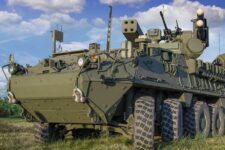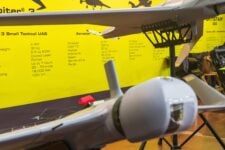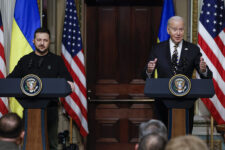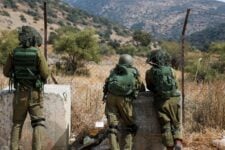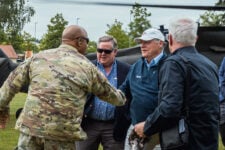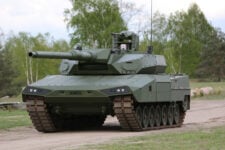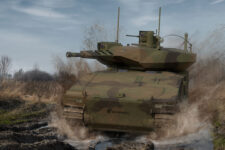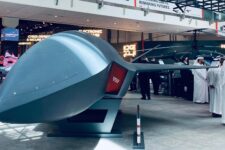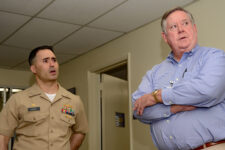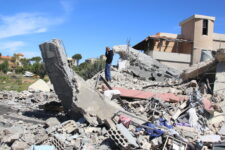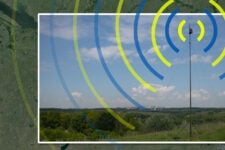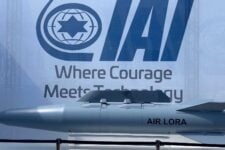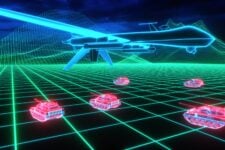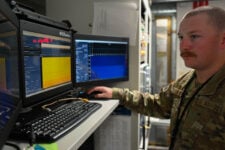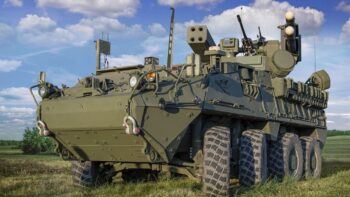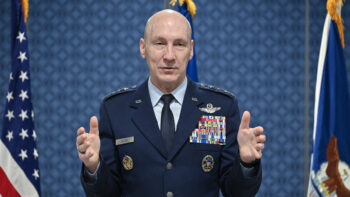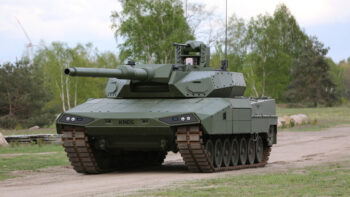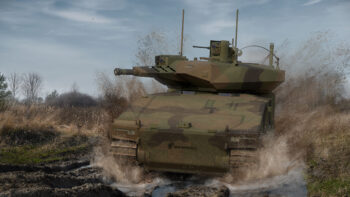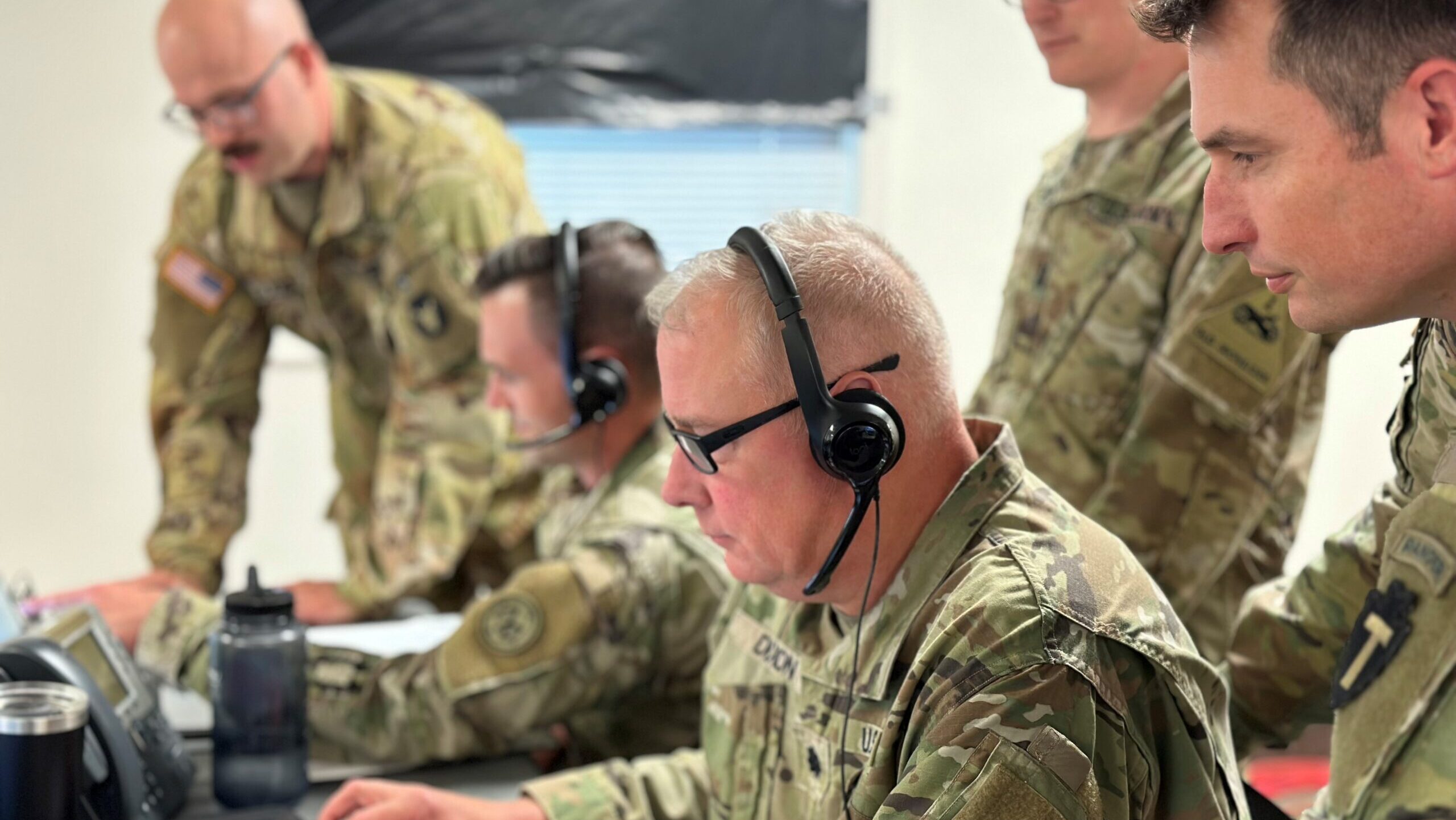
Soldiers from the 42nd Infantry Division, 36th Infantry Division, and 1st Armored Division battle track during Warfighter Exercise 23-5 at Fort Indiantown Gap, Pennsylvania, June 5, 2023. (DVIDS)
If there’s a potential silver bullet to the threats of near-peers, it’s mastering multi-domain operations. Training for MDO is an Army wide enterprise imperative, and we discuss the training challenges of transforming in contact with Brig. Gen. Scott Woodward, deputy commanding general, U.S. Army Combined Arms Center-Training, Fort Leavenworth, KS.
BREAKING DEFENSE: What is the requirement/threat scenario necessitating the need for enterprise training, especially for multi-domain operations?
BRIG. GEN. SCOTT WOODWARD: When I look at the requirement driving MDO, there’s multiple threats, peer threats, near-peer threats. I think the real requirement is not necessarily the threat, it’s MDO. If you can do MDO, you can defeat any threat.
When you look at how our doctrine’s evolved and FM [Field Manual] 3.0, it started with the Airland Battle in the ’80s and went into the late ‘90s. Then we went to full-spectrum operations in 2001 because we were in Iraq and Afghanistan, and we were just coming out of the Balkans. Then we went to Unified Land Operations in 2011, which was focused on doing large-scale ground combat again.
When FM 3.0 [update] was released in October of ’22, our new operating concept became multi-domain operations. Where that was a huge departure from previous ones was before we thought of the domains as land, air, and sea, and this added in land, air, sea, space, and cyber.
Then it added in the three dimensions: the human dimension, the physical dimension, the information dimension. That’s what’s driving our training, and driving the way we train for multi-domain operations. It’s changing the way that we execute training, the way we fund training, it’s changing some of our priorities in the training environment.
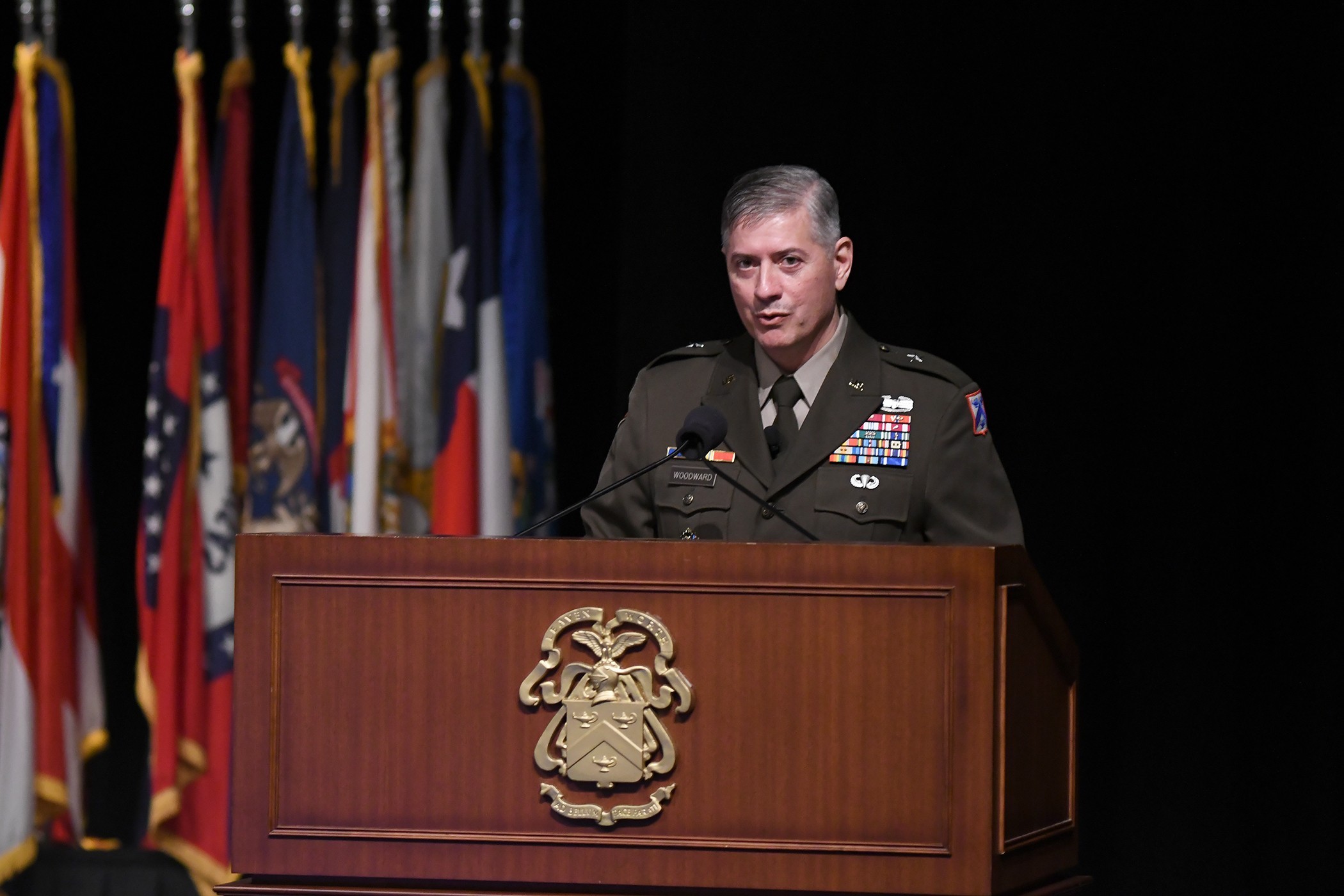
Deputy Commanding General Brig. Gen. Scott Woodward, Combined Arms Center – Training, speaks during his promotion ceremony in January at Fort Leavenworth, KS. Photo by Tisha Swart Entwistle.
What are examples of those dimensions in MDO?
In the land domain, I have the physical domain of the land itself – the terrain, the infrastructure, whether it’s out in the mountains or in a city.
Then I have the human dimension, the people that live in those places and how they affect the battlefield – and the enemy, because they’re humans.
Then you have the information dimension. Look at how that’s changed our lives in the last five or 10 years with everything in the information environment from the media, to social media, to soldiers passing information back and forth on the battlefield.
When you look at each of the five domains, you have to take into account the three dimensions within each one of those as you’re planning.
What are the challenges associated with managing a growing network of systems such as training networks and live ranges that have to operate in five domains and three dimensions to create a meaningful training environment for soldiers?
The way I look at it is, what can we afford to do now, or what is critical that we do quickly that we can afford? Then what do we do in the midterm?’
The way the chief describes it is continuous transformation. Transforming in contact is the next 12 to 24 months. What can we get done in the next 12 to 24 months, with the resources we have?
Then there’s deliberate transformation, which is two to seven years out, [followed by] concept-driven transformation, which is beyond seven years.
An example of transforming in contact is our work on the command and control networks and battle command systems that we have realized are not survivable on the modern battlefield.
They’re too big, they put out too much of a signature, they’re hard to move around. How do we make them smaller, more agile, less seen in the electromagnetic spectrum? That’s a 12 to 24 month challenge.
Under the Synthetic Training Environment, the idea is that we are going to be able to be better integrated [through] live, virtual, and constructive [training]. In the near term, we’re working on what’s the next generation of MILES laser engagement system [and] what’s our next collective trainer for our aircraft and our ground combat vehicles going to be.
Then a little farther off in the future we’re looking at what we call next-gen constructive, which is going to be our simulation engine that is driving our corps and division warfighter exercises. When you look at what we do now for our divisions and our corps, we use a program called Joint Land Component Constructive Training Capability.
That was developed 10, 15 years ago, and what it was developed and designed for, it does very well. It does the land domain well. It does the air domain well. It does the maritime domain a little bit, but doesn’t do space and it doesn’t do cyber at all.
We’re thinking if we’re going to make the Synthetic Training Environment [then] it’s all going to be connected. How do we make what our next generation of this is going to be – all five domains in the three dimensions – so that we can train our corps and divisions in a multi-domain scenario?
During these enterprise training exercises, you’re also changing the way higher control [HICON] is executed. Explain, please.
The Mission Command Training Program here at Fort Leavenworth, or MCTP as we call it, are the ones who run those exercises. In the past, we’ve done a multinational warfighter [exercise] about every other year. Not only are we going to do them now every year, but in some cases we’re going to do multiple exercises a year with our multinational partners.
The big change this year was that the chief asked us [that] when we have a corps-level warfighter [exercise], that the Army service component command for that corps – wherever they’re doing the exercise, whether it be in the Pacific, Europe, or Central Asia – be the HICON for it instead of MCTP acting as the HICON.
If you look at the big exercise that just happened in Europe, Austere Challenge 24, it was a EUCOM-level exercise run by the Joint Staff J7, [and] underneath it we conducted a warfighter exercise where US Army Europe and Africa was the HICON.
Fifth (V) Corps was the training audience with the First Division, the Third Division of the US, a UK division, and an Estonian unit. [It was a] huge exercise from the GCC [geographic combatant command] level all the way down to the division level that was integrated.
We’re trying to pull as much as we can out of that so that we can have an effective simulation to train those size units to be able to conduct combat operations in the future.
How is operations and maintenance of training systems in an enterprise environment evolving?
That is a huge part of my day-to-day job. Once the training system is fielded, it’s our responsibility. We’re responsible for all training aids, training devices, simulators, simulations in the Army.
You have to prioritize how much money you have every year, what you can spend, and what we can keep sustained to a level that soldiers can still train on it. Now we’re to the point of [determining] what are we going to stop doing, what are we going to get rid of, what’s obsolete, and what do we need right now that’s a high priority that’s new?
Let’s take ranges, for example. Keeping the 7,000-plus Army ranges not only maintained but modernizing them is a huge task. One example [looking] across all our ranges – our small arms ranges, our tanks ranges – [are our] targets and target lifters.
They’re done by six or seven different vendors; some of them have proprietary software and mechanisms in them so that if a target breaks at Fort Moore, GA, and I don’t have that part there, I can’t necessarily just grab a part from Fort Stewart, GA, and bring it over there and fix it because they’re all different.
We’re working on what’s called the Future Army System of Integrated Targets, FASIT. These things are all going to be the same. It’s going to be owned by the government instead of private companies. Parts will be interchangeable.
We’ll be able to have what’s called multi-spectral targets, where the targets will be able to give off different EW signatures and infrared. They’ll be able to receive effects from EW systems under a new software program where the target operators, instead of hitting old buttons that are hooked up by fiber optic cable, it’ll all be on iPads over the air, and you can change scenarios very quickly.
When you look at ranges, what are we going to prioritize? We’re bringing new weapon systems online like Next Generation Squad Weapon, we’re bringing Mobile Protected Firepower online. We have to build ranges for those, or we have to modify our existing ranges.
